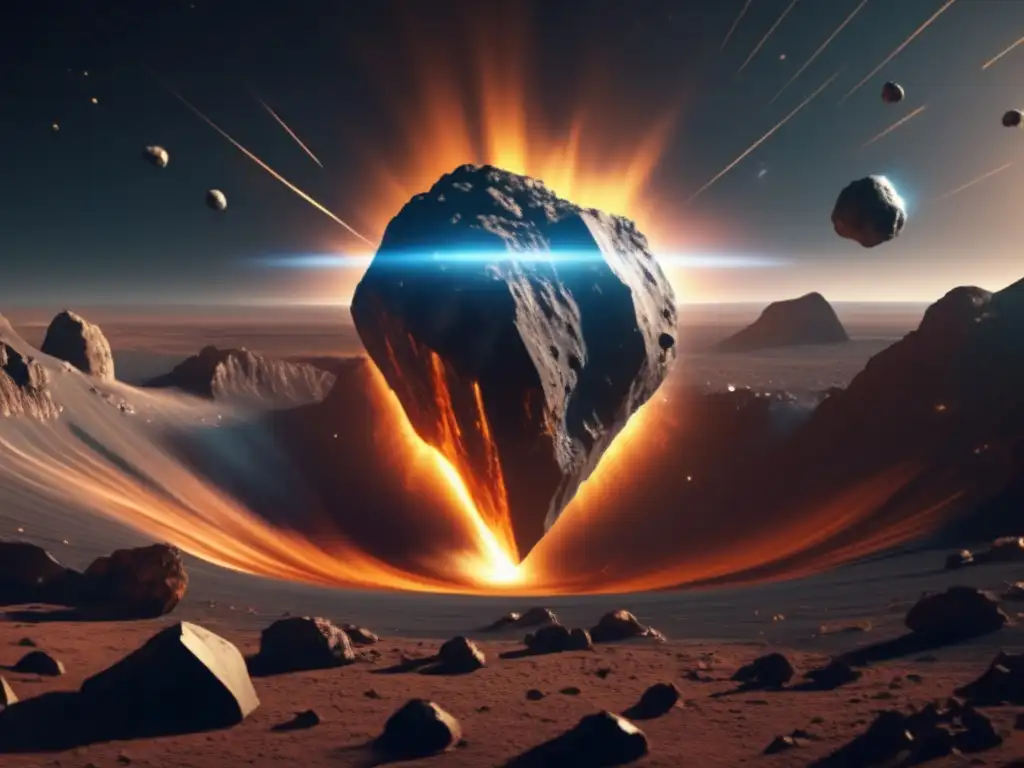Defenders Of Earth: Current Strategies For Asteroid Defense

Introduction
Asteroids, also known as minor planets, are small rocky or metallic bodies that follow an orbital path around the sun. While most asteroids are harmless, some have the potential to collide with Earth and cause significant damage. With the increasing threat of asteroid impacts, scientists and researchers have developed various strategies to defend Earth against these near-Earth objects (NEOs). This article will explore current strategies for asteroid defense and the technology behind them.
Near-Earth Object Observations

The Importance of Observing NEOs
In order to defend against a potential impact, it is crucial to first identify and track near-Earth objects. A comprehensive survey of NEOs is ongoing, and numerous telescopes and spacecraft are dedicated to this task. One such example is the Panoramic Survey Telescope and Rapid Response System (Pan-STARRS), a network of astronomical cameras that detects and tracks NEOs. Other ground-based telescopes include the Catalina Sky Survey in Arizona and the Mount Lemmon Survey in Tucson.
Space-Based Observations
Several space-based observatories have also been launched to identify and track NEOs, including the Near-Earth Object Wide-field Infrared Survey Explorer (NEOWISE) and the European Space Agency's (ESA) Gaia satellite. Both of these observatories use infrared technology to detect and track asteroids, which helps to uncover previously undetected objects that may pose a threat to Earth.
The Importance of Early Detection
The earlier an asteroid is detected, the more time there is to develop and implement a defense strategy. Early detection would allow us to apply deflecting techniques that could alter the asteroid's path, thus avoiding a catastrophic collision. The ultimate goal is for astronomers to detect all NEOs that are 140 meters or larger, as these pose the greatest threat to Earth.
Deflection Strategies

Kinetic Impactors
The kinetic impactor technique involves sending a spacecraft to collide with an asteroid, which would alter its trajectory away from Earth. This technique was successfully tested in 2005 when NASA's Deep Impact mission collided with comet Tempel 1, creating a crater and ejecting material into space. Kinetic impactors are best suited for smaller asteroids, as larger ones may require a more powerful deflection method.
Gravity Tractors
A gravity tractor works by using a spacecraft to hover near an asteroid, utilizing the gravitational pull between the two bodies to gradually alter the asteroid's orbit. This technique would require a spacecraft to remain near the asteroid for an extended period of time, potentially months or even years. While this method has not yet been tested, it shows promise for use against larger asteroids.
Nuclear Detonation
Nuclear detonation is a last resort option that would involve detonating a nuclear device near an asteroid to alter its trajectory. While effective, this method is controversial and carries significant risks. The use of nuclear weapons in space is heavily regulated, and there are concerns about the potential impact on the asteroid, as well as the creation of radioactive debris that could pose a threat to Earth.
Asteroid Redirect Mission

The ARM Concept
In addition to deflection strategies, NASA has proposed an Asteroid Redirect Mission (ARM) to help protect against asteroid impacts. The ARM concept involves capturing an asteroid and redirecting it into lunar orbit, where it could be studied and potentially mined for resources. The mission would also serve as a test for future asteroid deflecting techniques.
The Benefits of ARM
The ARM concept has several benefits, including the ability to study and learn more about asteroids, as well as the potential to extract valuable resources such as water and minerals. Additionally, redirecting an asteroid away from Earth would reduce the potential threat of impact, making ARM a multifaceted solution to asteroid defense.
Frequently Asked Questions

-
How likely is an asteroid impact on Earth?
While the likelihood of a catastrophic asteroid impact is low, it is still important to prepare for the possibility.
-
What is the largest asteroid ever detected?
The largest asteroid currently known is Ceres, with a diameter of about 590 miles (940 kilometers).
-
What asteroid has come closest to Earth?
The asteroid 2020 QG came within 1,830 miles (2,950 kilometers) of Earth in August 2020, the closest known asteroid approach without impact.
-
What would happen if an asteroid collided with Earth?
The effects of an asteroid impact would vary depending on the size and location of the impact, but could include widespread damage, tsunamis, and even global climate change.
-
How can I contribute to asteroid defense efforts?
There are several ways individuals can support asteroid defense efforts, including advocating for increased funding for asteroid research and engaging with organizations such as the Planetary Society.
Conclusion
As the threat of asteroid impacts becomes more pronounced, it is crucial that we continue to develop and refine our strategies for asteroid defense. The numerous techniques and technologies discussed in this article demonstrate our ongoing commitment to safeguarding our planet against potential NEO impacts. By investing in asteroid defense efforts, we can improve our ability to detect, track, and deflect any asteroids that may pose a threat.
Thank you for reading this article on asteroid defense, and please feel free to share your thoughts and ideas in the comments section below. We encourage you to stay engaged with www.asteroidrealm.com for further information and updates on asteroid research and defense efforts.
Additional Resources

For more information on asteroid defense:
 Bracing For The Big Bang: Tools For Asteroid Defense
Bracing For The Big Bang: Tools For Asteroid Defense Shielding The Planet: Techniques For Asteroid Defense
Shielding The Planet: Techniques For Asteroid Defense Beyond Impact: The Science Of Planetary Defense
Beyond Impact: The Science Of Planetary DefenseIf you want to discover more articles similar to Defenders Of Earth: Current Strategies For Asteroid Defense, you can visit the Planetary Defense category.
Leave a Reply

Articulos relacionados: